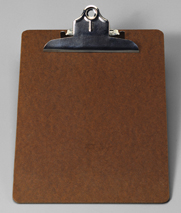The Trading Standards Institute (TSI) has published a code of practice for sky lanterns, the outcome of discussions between Government and industry hosted by the Department for Environment, Food and Rural Affairs.
Concerns have been raised about safety of sky lanterns, as, the TSI says, they have the potential to create a risk to consumers, cause fires, accidentally alert coastal rescue services, litter the land and sea, damage livestock and animal health and could be a risk to aviation. The new code aims to provide guidance for manufacturers, importers, distributors and retailers. The code will help market surveillance authorities recognise the necessary safety checks, the type of warnings and instructions that need to accompany the product, and help ensure the responsible sale and safe use of sky lanterns.
Leon Livermore, TSI’s chief executive, said: “We are pleased the industry has taken this initiative and developed this code of practice which provides a set of guidelines to help minimise the potential risks associated with the misuse of sky lanterns.”
The Coalition Government’s Farming Minister George Eustice said: “This new industry code of practice will help assure that sky lanterns are manufactured to be safe, biodegradable and sold responsibly. People are becoming more aware of the dangers of sky lanterns and how to reduce the risk of them causing damage. Over the last year Defra has highlighted these risks, and a number of retailers have decided to stop selling them while some local authorities and event organisers have banned sky lanterns altogether.”
Several retailers, including Poundland and Tesco stopped selling sky lanterns in the past 12 months, TSI point out. The code of practice can be found on the TSI website – http://www.tradingstandards.gov.uk/policy/skylanterns.cfm.
Some say however that the code does not go far enough. The National Outdoor Events Association (NOEA) has already called the lanterns dangerous to the public, livestock and buildings. Earlier this year the NOEA campaigned to raise awareness among the public, event organisers and to gain a parliamentary debate in a bid for an outright ban which has won support from the NFU, CLA, some local authorities and the Business Visits & Events Partnership.
Susan Tanner, NOEA’s chief executive, said: “We have been involved in the discussions from the outset and while the code is a step in the right direction it doesn’t go far enough. Sky lanterns may look pretty but in reality they are balls of fire being sent into the air uncontrolled and unmonitored causing damage to animals and property. Ultimately there is a risk to human life; we have already seen firefighters injured while tackling a blaze caused by a lantern.
“We ask our members to impose a voluntary ban while we continue to gather the evidence to support an outright ban; much of it at the moment is anecdotal and we need the hard evidence to drive it forward. There is a petition in place asking government for a Parliamentary debate to support the ban which can be found via our website and we over the summer some local councils have been taking the initiative to ban the sale and use of sky lanterns – we hope more will come on board.”
Richard Limb, NOEA’s president, added: “We are sure if people realised the long term effect they would be horrified. The floating fire balls may not cause blazes but little bits of wire may end up in silage and the consequences for livestock can be dire.”
NOEA’s website – www.noea.org.uk – has a section where evidence can be submitted of issues faced by the public as well as downloadable posters, signs and letters for use in backing the campaign. There is also a link to the petition calling for the Parliamentary debate.










